Hydroponics is an indoor farming system that helps grow common vegetables and plants without depending on soil and climate. The system does not use soil and is automated using sensors and microcontrollers to avoid human intervention. The user should plant a plant and set its initial parameters. This system can maintain parameters and promote healthy plant growth. The automated hydroponic system easily connects to Wi-Fi and can give you minute-by-minute updates that allow you to have complete control over the health of your plants.
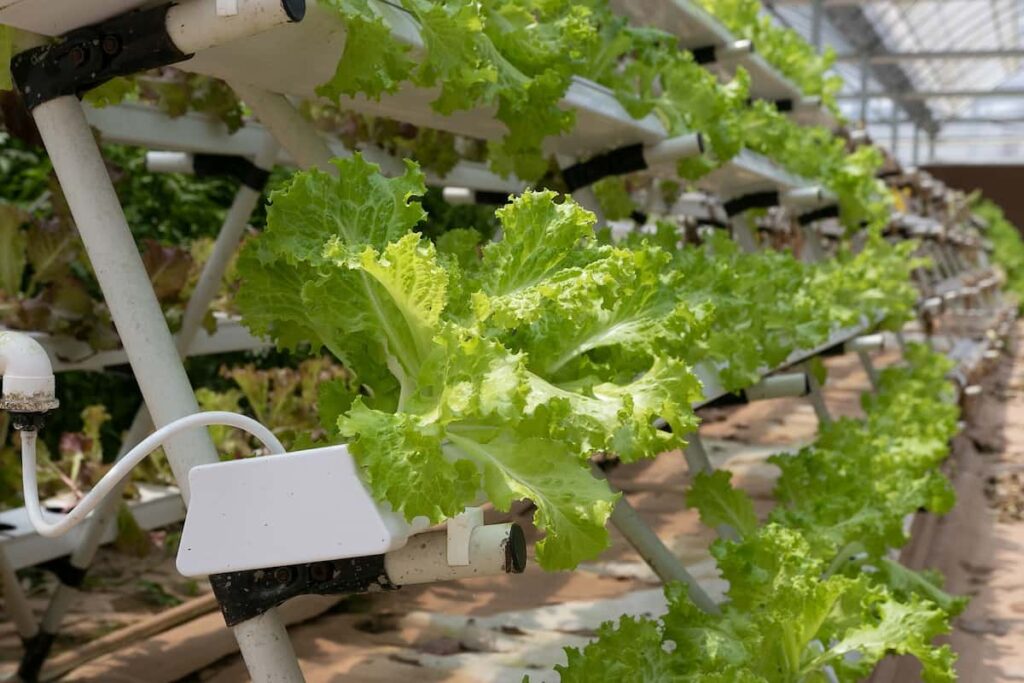
Low-cost hydroponic farming with automation
Introduction to low-cost automated hydroponic farming
Hydroponics requires a lot of automation and can manage nutrient dosage, temperature, and humidity with the help of automation. Indoor hydroponics systems have to give light and climate artificially, so automation is very important in indoor plants. Automated systems can record your plant conditions, EC, pH, temperature, humidity, etc., so you can monitor the data and operate the process according to your preferences and convenience.
A fully automated hydroponics system for growing indoor plants is very helpful for new-aged growers. Plus, you can link the automation software to your phone and access your form from anywhere. A hydroponic grow system is a sustainable method of growing with water that saves between 70% and 90%, depending on the type of plants and grow setup. Crops in hydroponic environments include microgreens, leafy greens, and medicinal cannabis.
Rockwool is one of the market’s most common substrate options, but others include perlite, vermiculite, coir, coco, clay pellets, peat moss, sawdust, sand, and gravel. Hydroponic farming is a process of growing crops without soil; the main advantages are environmental and nutrient control, water conservation, and labor reduction. This technique relies on various technologies that can be applied to the principles of automation to improve productivity and consistency.
In this method, crops are grown on water rich in essential nutrients. In addition, this method provides a solution to the problem of watering plants. Plants found in homes, workplaces, and other public places require people to water the plants manually. Instead, an automation system with a moisture sensor provided near the plant pot is used to detect whether the soil is wet or dry.
Automated hydroponic system for plant growth
Controlled lighting
In an indoor grow room without an external (or natural) light source, but not all lamps are created equal. In addition, plants require a certain amount/quality of light depending on their growth stage and type of crop. So, we need automation here. A hydroponics automation system maintains the light your plants need with a smart hydroponics system.
Grow all seasons
Because indoor cultivation doesn’t depend on external influences like rain and sunshine, you can often grow year-round. In addition, all seasons can be controlled through automation called smart hydroponics farming.
Single handle run
You can run your farm alone as our system is data and command based, so the hydroponics system controller can run automatically until something goes wrong. You don’t need a worker to monitor things that are not required.
In case you missed it: Earning Up to 3 Crores Per Year from Soilless Farming: A Success Story of a Hydroponic Farmer in India
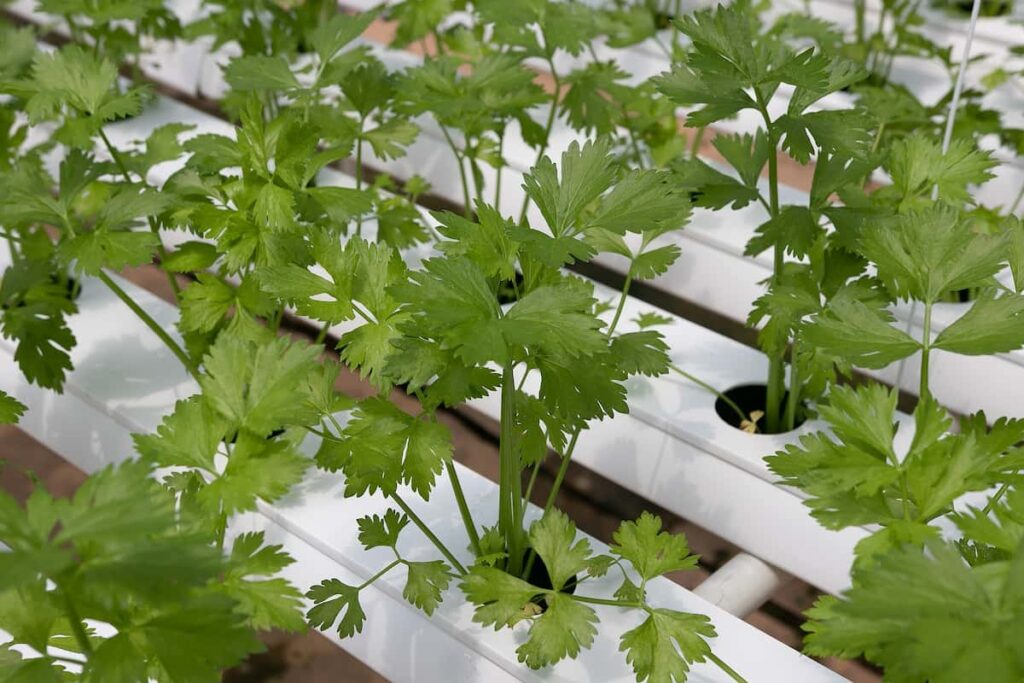
Components of automated hydroponic system
- Grow Director
- 10″ touchscreen interface
- Ten built-in relays
- A power box with four universal outlets that can be controlled separately can be done
- Hydrobox (2m (6.5ft) cable) with three sensors (pH, EC, water temperature) and four peristaltic pumps
- GDA software
- Air humidity sensor
- Air temperature sensor
- pH sensor
- EC sensor
- Water temperature sensor
Automatic hydroponic system cost
- 120 Kg – Rs. 62,000
- 230 Kg – Rs. 1,30,000
- 500 Kg – Rs. 2,70,000
Benefits of automatic hydroponic grow pot
- Dimmable Plant Grow Light
- Automatic Water Feeder Pump
- Reserve the water tank with a low-level alert
- Adjustable plant-growing settings
- Wall mount as well as a desktop placement
- Act as wall decoration
The system uses grow light, light dimmer circuitry, water pump, water tank, LCD, water sensor, and control circuitry based on a controller to develop a fully automatic operation system. An AC power supply powers the system to operate the circuitry. The system circuitry is powered by a DC power supply that allows the user to adjust the grow light and water settings. According to the settings provided to the device, the system will adjust the intensity and duration of light and water to achieve the desired plant growth.
The system has an inbuilt water tank for reserve water which allows the system to water the plant for a week. AutoPot mainly offers a full range of premium, bucket-style hydroponics. Hobbyists and commercial growers alike can use them. But, their higher module count systems are specifically designed for greenhouse and commercial growers. Built with the largest quality, most durable components around, this system is built to last.
They offer electricity-free, automatic watering and irrigation system automation that allows you to free yourself from the grow room. They are modular, so you can easily adjust your configuration in minutes. Bigger, stronger plants are growing all the time. They are perfect for hydroponics. But you can also use them for traditional soil fertilization and the irrigation automation that the systems provide.
Need for hydroponic farming automation system
There is a great need for automation systems in hydroponic farming. It is because of the tasks that require a lot of precision. Some tasks are difficult for humans to do. Hence automation system is necessary to reduce the workload on the farmers. It is ideal for production as less time and labor are required in all farming operations. Automated hydroponic farming systems have recently taken off on a large scale in India since many farmers want to increase their efficiency.
The automation system also helps in reducing labor costs, which is a great help to the farmers. The automation section offers various hydroponic farming equipment, such as fertigation and dosing controllers. It helps provide a specific fertilizer to crops by mixing with water. This equipment is very helpful in commercial farming. In addition, with their help, nutrients are provided to the roots. It is not the case with normal irrigation systems. So, the fertigation and dosing controller has the upper hand in this.
They contain sensors that detect many factors such as temperature, amount of sunlight, etc. It helps conserve water and nutrients. Farm automation is essential for the improvement of hydroponic farming. It saves a lot of resources for the farmer and hence helps the farmer to a great extent. Also, with increasing demand, farmers must embrace automation systems for faster and quality production. Many other factors, such as prices and labor, change over time.
Therefore, there is a need for automation systems in farming. Due to the advancement of technology, modern farming has started using it for the efficient growth of crops. Automation timers have different timers like reserving timers, priming timers, etc. These timers are necessary to provide nutrients and water for a specific time. So, more water and more nutrition help. In addition, temperature and humidity regulators help regulate temperature and humidity to provide an optimal environment for plants.
In case you missed it: How to Start Hydroponic Farming/Gardening from Scratch in India: A Step-By-Step Guide for Beginners
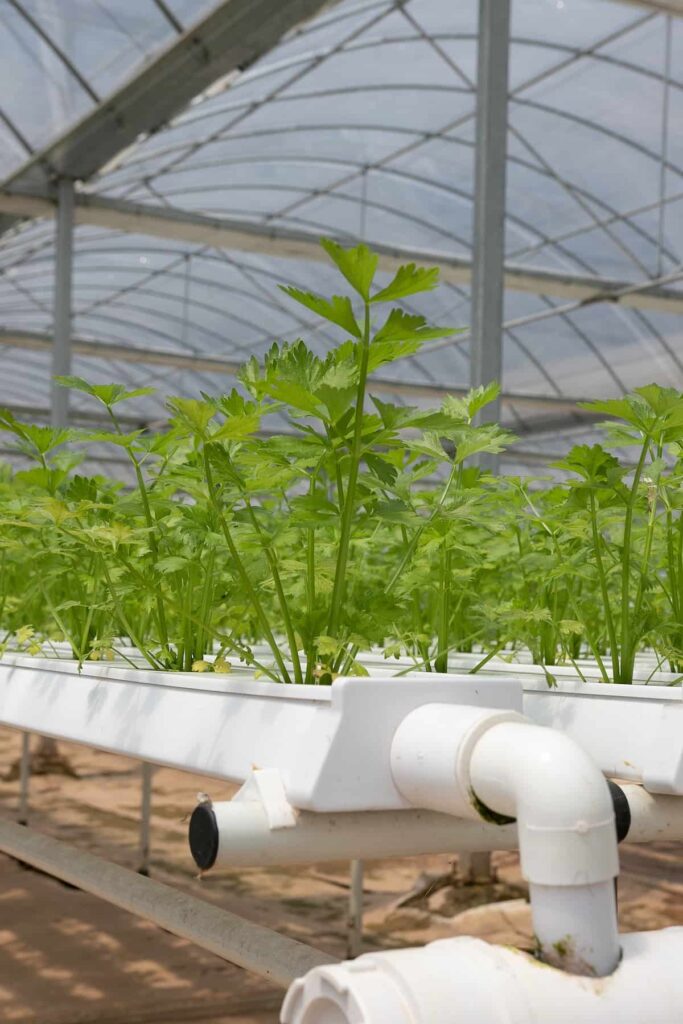
Advantages of hydroponic farming with automation
Reduce your labor cost – By reducing the amount of manual work, you can reduce labor costs and free up your labor for other work.
Accuracy – Accuracy is very important in hydroponics farming because everything depends on the nutrient requirements of the plants, and with the help of automation, one and have more than one crop with different combinations of nutrients with correct nutrient dosage.
Increases quality and productivity – Using automation, you can create an ideal climate that hydroponics plants need for optimal growth. In addition, we can provide the correct nutrients to increase our quality and yield.
Grow lights – Grow lights must maintain intensity and wavelength to stimulate plant growth. It is determined by measuring and tuning the light spectrum. The lights are set for 14 hours ON time and 10 hours OFF time.
Water pump – As plants grow, they absorb nutrients and oxygen from the water. Therefore, it is important to keep the water circulating in the tank. Also, stagnant water is a breeding ground for mosquito larvae and other bacteria. The water pump is set to operate every 30 minutes.
Nutrition – The system takes samples from the tank at regular intervals to ensure correct pH and PPM levels. Corrective action is taken if the pH or ppm is below or above the desired level, and the measurement is repeated.
Super closet super flow hydroponic system with automation
There aren’t many high-quality aeroponic systems we’ve come across, but the Super Closet Super Flow System lives up to our expectations. It is perfect for growing 20, 26, or 32 plants in a small space. Choose the configuration that best suits your preferences and grow the room. All the ingredients are also of excellent quality. It is designed to avoid clogging and can contain coarse organic nutrients if you prefer natural growth.
This is built to last, and you’ll get many successful, heavy crop cycles from it. Another advantage of this system is that it can be fully automated, making scaling up much easier than other systems. Finally, while it is classified as an aeroponic system, it also tops out as a drip system. So, it’s technically an NFT, Ebb and Flow, and Aeroponics system. This bottom and the top feeding combination allows for maximum saturation of the plant roots and leads to insane growth rates with huge yields.
Features of hydroponic system with automation
- Measure water conditions: pH, electrical conductivity, temperature, level, and flow.
- Measure air conditions: temperature, humidity, vapor pressure deficit, and carbon dioxide (CO2).
- Control relays to modulate lights, air exhaust fans, and humidifiers.
- Control four peristaltic pumps to dispense specific amounts of solution: acid, base, nutrient A, and nutrient B.
- Automatically adjust water to target pH range by dispensing acid/base solutions.
- Automatically adjust water to target electrical conductivity range by dispensing nutrient solution.
- Automatically adjust air for humidity, temperature, and CO2 concentration ranges by modulating exhaust fans and humidifiers.
- Automatically regulate air vapor pressure deficit (VPD) with humidifier and exhaust fan using PID controller.
- Use the timer to schedule grow lights, air exhaust, and DSLR camera shutter for high-quality time-lapse photography.
- Email alert notifications if selected measurements fall outside acceptable limits (such as temperature too high, water level too low, water flow stopped, etc.).
- Measure electrical energy consumption from transformers to automatically calculate operating costs.
- Use the Raspberry Pi camera to monitor plants with a live video stream and take time-lapse photography of plant growth.
In case you missed it: 16 Key Rules for Effective Hydroponic Farm/Garden Management: From Planning to Reduce Production Cost
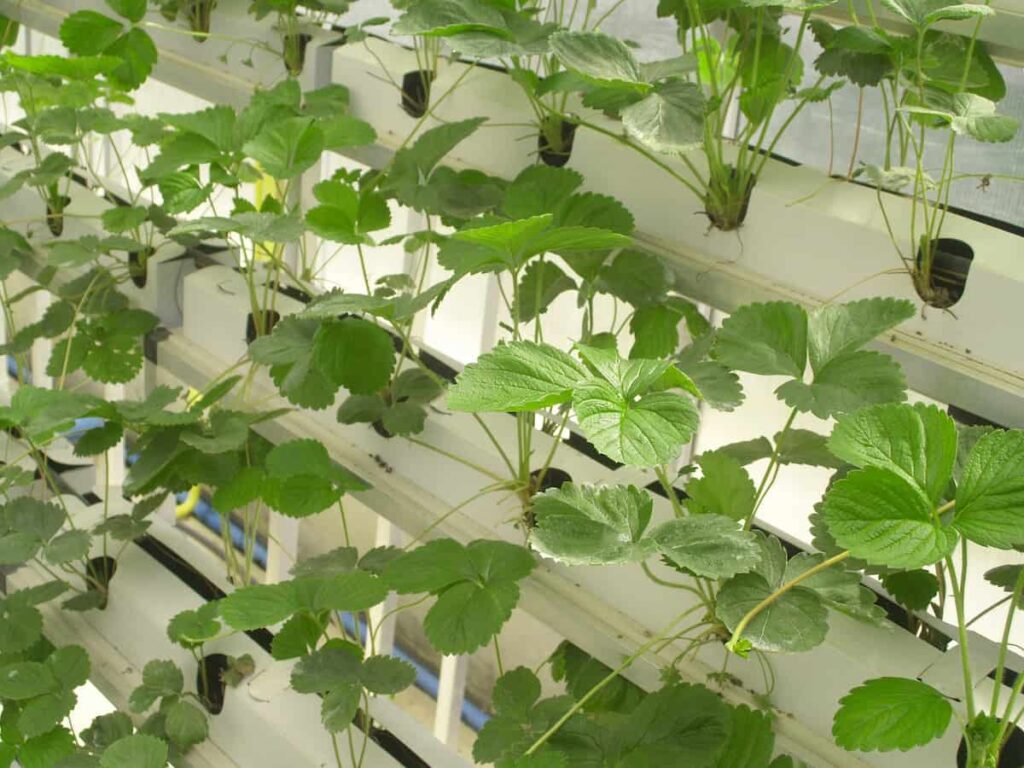
Setting up low-cost hydroponic farms with automation
More and more people are trying to set up hydroponics farms, as it does not require a large area and the cultivation process requires very little water. Moreover, IoT systems have allowed farmers to automate the hydroponic farming process to a certain extent. For example, some areas tend to get waterlogged during winter, which can stop the cultivation process altogether. Water temperature sensors installed on the hydroponics farm can detect the drop in temperature and alert the farmer accordingly.
Similarly, a pH sensor can detect changes in nutrient levels and pump out the appropriate amount of minerals. An assortment of sensors and controllers, such as ESP-8266, Arduino and Raspberry Pi, etc., can be used to instrument and automate the hydroponics farm. Automation is the key for growers looking to optimize, modernize, and expand their businesses for sustainable crop production. The overall benefits of automating your growing operation are vast and numerous.
Regardless of how you want to develop your growing enterprise, automation offers universal benefits that allow you to achieve your goals. Automation hardware is everything included in a basic hydroponic system that will allow autonomous monitoring and control. It includes sensors for air, water, and electricity measurements, peristaltic pumps, and power control boxes that will modulate fans, lights, humidifiers, or other devices.
IoT-based automated hydroponic system
Hydroponics is a fully automated system that can be integrated into agriculture by introducing business skills. The system automatically monitors and controls environmental factors such as light intensity, pH, electrical conductivity, water temperature, and relative humidity through sensors and actuators on the system. Maintenance and automated monitoring are done through IoT, which transfers and retrieves data over the internet (mass storage).
Objectives of the proposed system:
- Grow vegetables and fruits from your home with the help of the hydroponics horticulture technique.
- To design and develop an algorithm for an automated system to mix appropriate nutrients with water for hydroponics horticulture.
- Designing IoT architecture with appropriate sensors for automated watering and crop monitoring.
In brief, this IoT-based hydroponics system features:
- The automated water system for the hydroponics system
- Internet monitoring and control (using Android app, web)
- Compact and cost-effective hydroponics horticulture system
- Vegetables and fruits cultivation for home needs
In case you missed it: Common Mistakes Made in Hydroponic Farming: Things to Avoid for Beginners

Automated hydroponic greenhouse systems
Older or more traditional greenhouse systems use soil as a growing medium. It has been a favorite among growers because, at one point, it was the only growing method. However, modern greenhouse growers are incorporating hydroponics into their greenhouses, i.e., replacing soil with water. It gives them complete control over what enters their plants (insects and pests). In addition, an automated hydroponic greenhouse system controls water quality and the nutrients needed to feed your plants.
Imagine having a system that automatically takes care of irrigation water, greenhouse water recycling, and multiple feed formulas that are delivered to your crops on a daily schedule. It significantly increases yield and can reduce your labor, energy, and fertilizer costs. The difference between a traditional greenhouse and a hydroponic greenhouse is the method chosen to grow soil or less soil. Accordingly, you need to choose the appropriate fertigation system and configure it to provide your greenhouse crops with sufficient clean water and nutrient solutions.
Likewise, for your hydroponic greenhouse to produce, you’ll need the right water pump, tank, controls – and of course, the right support system for automation. Your hydroponic greenhouse should also have a lighting and ventilation control system. So, you will need to implement a combination of a proper hydroponic drip irrigation system and a greenhouse automation system. In a hydroponic growing system, crops are suspended in a water solution.
Sometimes, they can be grown in other mediums without soil, like perlite, Rockwool, vermiculite, coconut coir, etc. In an active system, pumps circulate nutrient solutions and aerate the plants’ roots in the water or non-water, non-soil medium. In a passive system, controls or instruments are used in the greenhouse without technology. The nutrient solution is fed to plant roots without a pump using capillary action, gravity, or flooding. Then it relies heavily on manual labor, and it’s hard to get a competitive edge with this system.
In case you missed it: How to Get Hydroponic Farming Subsidy: Up to 50%, and License to Start
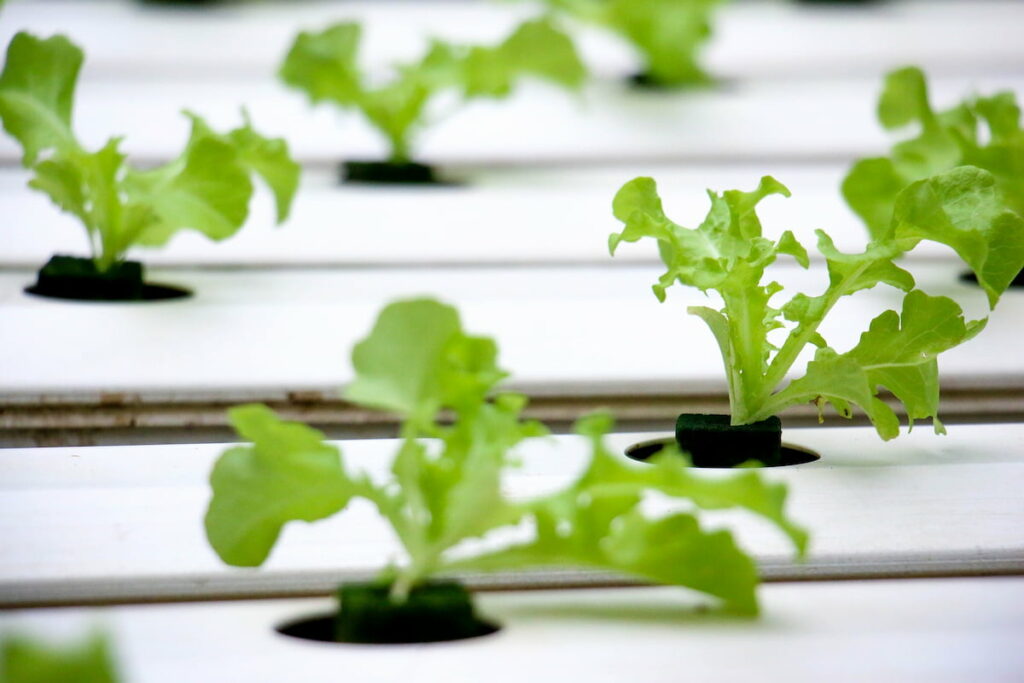
Even if the growing environment can be optimized and automated, things like heat, air circulation, humidity, Co2, and other environmental conditions, if not controlled indoors, may not be favorable for your plants all year round. Therefore, an automated solution like our Climate Manager will be able to maintain the optimal growing environment for better crop yields.
Conclusion
An automated hydroponics system is required for modular hydroponics. Hydroponics automation systems help growers get real-time data. Farmers can make critical decisions with the help of hydroponic farming automation. The hydroponic monitoring system enables programmable time control and other system monitoring based on a simple graphical user interface. In addition, the hydroponics system controller automatically manages all aspects of automatic hydroponic greenhouse climate control from temperature to CO2, light to humidity.
- Economical Aquaculture: A Guide to Low-Budget Fish Farming
- 15 Common Planting Errors That Can Doom Your Fruit Trees
- How to Make Houseplants Bushy: Effective Tips and Ideas
- Innovative Strategies for Boosting Coconut Pollination and Yield
- Pollination Strategies for Maximum Pumpkin Yield
- The Complete Guide to Chicken Fattening: Strategies for Maximum Growth
- Natural Solutions for Tulip Problems: 100% Effective Remedies for Leaf and Bulb-Related Issues
- Revolutionizing Citrus Preservation: Towards a Healthier, Greener Future
- Natural Solutions for Peony Leaf and Flower Problems: 100% Effective Remedies
- Maximizing Profits with Avocado Contract Farming in India: A Comprehensive Guide
- Natural Solutions for Hydrangea Problems: 100% Effective Remedies for Leaf and Flowers
- The Ultimate Guide to Choosing the Perfect Foliage Friend: Bringing Life Indoors
- From Sunlight to Sustainability: 15 Ways to Use Solar Technology in Agriculture
- The Ultimate Guide to Dong Tao Chicken: Exploring from History to Raising
- The Eco-Friendly Makeover: How to Convert Your Unused Swimming Pool into a Fish Pond
- Mastering the Art of Delaware Chicken Farming: Essentials for Healthy Backyard Flocks
- 20 Best Homemade Fertilizers for Money Plant: DIY Recipes and Application Methods
- How to Craft a Comprehensive Free-Range Chicken Farming Business Plan
- Brighten Your Flock: Raising Easter Egger Chickens for Beauty and Bounty
- How to Optimize Your Poultry Egg Farm Business Plan with These Strategies
- Subsidy for Spirulina Cultivation: How Indian Government Schemes Encouraging Spirulina Farmers
- Ultimate Guide to Raising Dominique Chickens: Breeding, Feeding, Egg-Production, and Care
- Mastering the Art of Raising Jersey Giant Chickens: Care, Feeding, and More
- Ultimate Guide to Raising Legbar Chickens: Breeding, Farming Practices, Diet, Egg-Production
- How to Raise Welsummer Chickens: A Comprehensive Guide for Beginners
- How to Protect Indoor Plants in Winter: A Comprehensive Guide
- Ultimate Guide to Grow Bag Gardening: Tips, Tricks, and Planting Ideas for Urban Gardeners
- Guide to Lotus Cultivation: How to Propagate, Plant, Grow, Care, Cost, and Profit
- Agriculture Drone Subsidy Scheme: Government Kisan Subsidy, License, and How to Apply Online
- Ultimate Guide to Raising Araucana Chickens: Breed Profile, Farming Economics, Diet, and Care
- Bringing Hydroponics to Classroom: Importance, Benefits of Learning for School Students
- Ultimate Guide to Raising Polish Chickens: Breed Profile, Farming Economics, Diet, and Care
- Ultimate Guide to Raising Australorp Chickens: Profile, Farming Economics, Egg Production, Diet, and Care
- Silkie Chicken Farming: Raising Practices, Varieties, Egg Production, Diet, and Care
- Sussex Chicken Farming: Raising Practices, Varieties, Egg Production, Diet and Care
- Homemade Feed Formulations for Livestock: Discover Cost-effective Starter to Finisher Feed Recipes
Interested in farming, need guidance and support
Interested in setting up a reasonable sized cost effective, setup.
It say 120kg setup for 62k, where do we get to see a working setup or who can we contact to buy the unit, unable to find any contact infor or direct link to the seller,
Need information about 62kg and 120kg.
Where we will get detailed information.?
Who is the contact person?
I am interested, please let me know to whom we need to contact?
I’m interested in starting a hydroponic establishment at my place.
Please inform me where I can see one such running farm, also the required training for managing the project.
Please inform me the contact details of such farm and training institute.